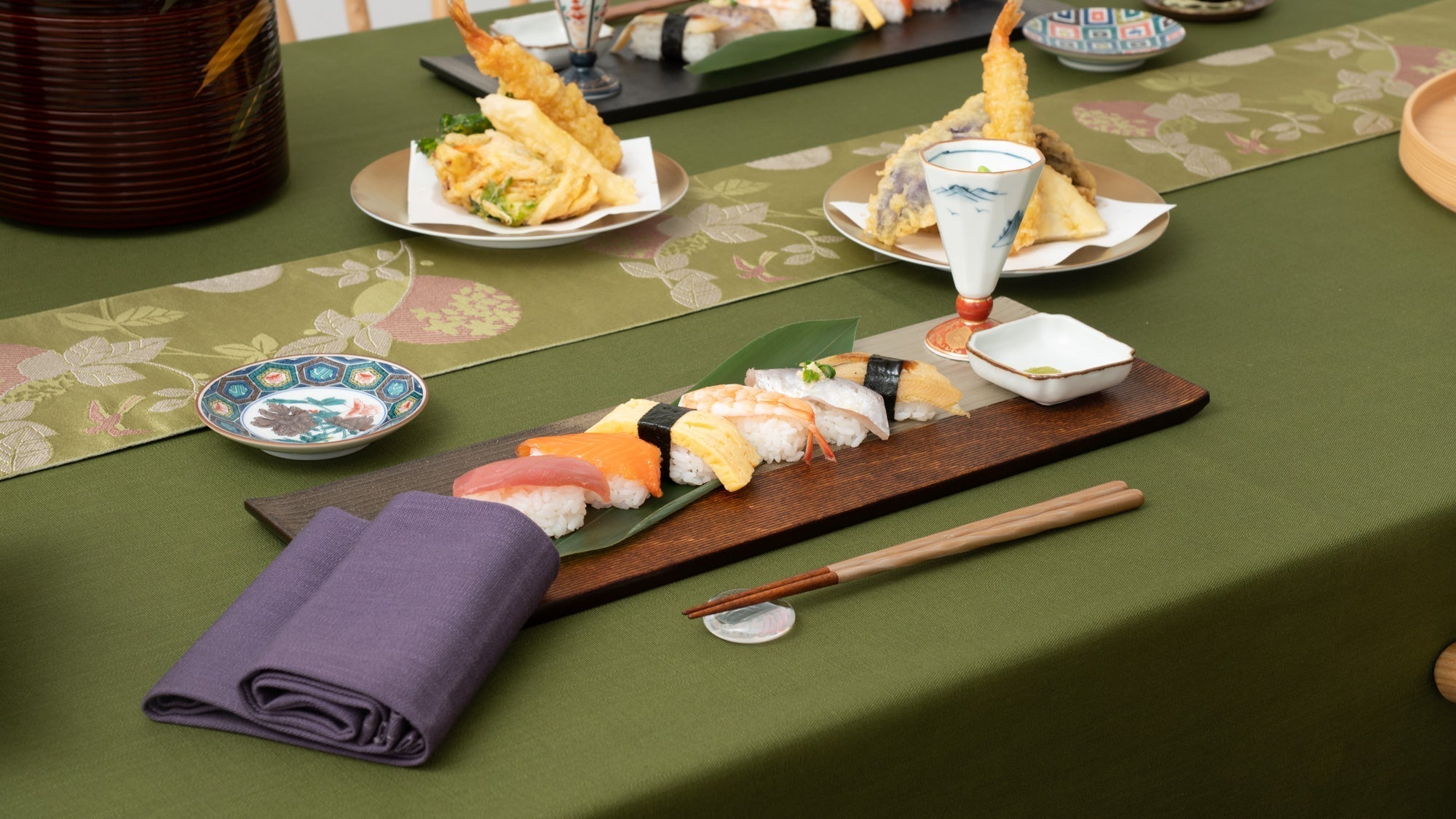
The Best Menu Dinner with Luxurious Lacquerware
Written by Team MUSUBI
Who wouldn't be delighted to come home to a delectable meal of sushi and tempura?
Let stylish and lavish lacquerware items take center stage at the table for a fine-dining eating experience at home with family and friends.
table of contents
Using Lacquerware
The uniquely designed Echizen lacquerware serving tray showcases the fresh colors of the sushi and the texture, distinctive of lacquerware, also adds a warm and sophisticated touch to the table.
Lacquerware is often used for stackable bento boxes like this Bamboo Grass Maki-e Yamanaka Lacquerware Two Tiers Round Jubako Bento Box. Colorful menus are presented with an added touch of elegance when served in a lacquerware Jubako Bento box.


Table Cloth and Tableware
For this setting, we first chose the lacquerware pieces in dark hues. Then we selected a natural green colored cloth with a lighter colored runner with a touch of pink to highlight the dark colored plates and bento box.
We prepared the table in a rustic, natural theme with the Gatomikio TOHKA KAKUSEN Yamanaka Lacquerware Katakuchi Sake Carafe sake set with a transparent coat of lacquer and a Shagaraki stoneware vase.

Presentation and Plating
We've introduced some basic rules of plating in some of our previous table setting articles, but we'll touch on some tips and rules as a refresher.
For sushi and thick slices of sashimi, plate them slightly slanted to the right. This style of plating is called "nagashi-mori" where "nagashi" means "to flow" and "mori" means "to plate." The food is plated like it "flows" in the natural direction of the way our eyes move from left to right.



Setting the Atmosphere


Featured Item
Echizen Lacquerware

Echizen lacquerware originated around the city of Sabae in Fukui Prefecture, in the northern part of Japan. Known for its subdued luster and elegant beauty with a history going back more than 1,500 years. Echizen lacquerware has developed techniques for product diversification and mass production in response to changing lifestyles and market needs. Echizen lacquerware is easy to use, durable, and beautiful, and is loved not only by households but also by cooking professionals, accounting for more than 80% of all lacquerware for the food industry and commercial use in Japan.







Leave a comment
This site is protected by hCaptcha and the hCaptcha Privacy Policy and Terms of Service apply.